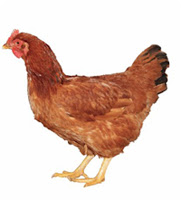Avian Influenza (Bird Flu)
Bird flu (Avian influenza) top the list of most deadly viral diseases challenging the poultry industry. It has the incubation period of 2 to 7 days and capable of wiping the entire flock before you can even contact a veterinary doctor, if care is not taken.
Bird flu is caused by Type A viruses which are commonly found in wild birds like waterfowl. A wild bird can be a carrier of bird flu without being sick but once it is spread to domestic birds and Psittacines like parrot, the impact is often fatal. Another danger of it is that it can be transmitted from infected birds to human being.
Causes Of Bird Flu
The disease is caused by viruses that belong to the family Orthomyxoviridae. The viruses have two surface proteins; haemagglutinin and neuraminidase which determine their subtype and the animal species they infect. There are 16 haemagglutinin and 9 neuraminidase types. When viruses of the two haemagglutinin types (H5 and H7) infect domestic poultry, they often mutate and virulent disease arises in these birds which is called highly pathogenic avian influenza (HPAI). The initial infection that does not cause minimal disease is called low pathogenic avian influenza (LPAI).
As earlier stated, wild water birds act as reservoir hosts of influenza viruses, however these viruses generally do not cause disease to them.
Direct or indirect contact, probably through drinking water, with migratory waterfowl is the most likely the source of infection for domestic poultry. Once established in domestic poultry, infection can also spread through contact with contaminated equipment or humans. Transmission through the egg is uncommon, although contamination of the shell does occur. Avian influenza virus is highly concentrated in the manure and in nasal and eye discharges.
Symptoms of Bird Flu
The symptoms of avian influenza appear within 2 and 7 days of infection. The symptoms can manifest in both domestic birds and human. Here are some of the symptoms to notice in birds and human.
a.) Domestic Birds
• Purplish wattle, combs and legs (Cyanosis).
• Inflamed eyelids, head, wattles, comb, and hocks.
• Infected chickens lack coordination.
• Death without any sign (sudden death syndrome).
It may also lead to Diarrhea, general body weakness (Ataxia), Significant drop in egg production (EDS), Visible nasal discharge, Sneezing and coughing.
It is not only important to know the symptoms but also to report any confirmed cases to relevant animal disease control authorities within your locality.
b.) Humans
The recognised source of avian influenza infection for humans is direct contact with infected live birds or their manure, so poultry products are relatively safe. Handling raw poultry meat products or eggs and eating cooked poultry products have not been recorded as causing infection. Cooking poultry products in the normal way destroys the viruses.
Since the infection can be transmitted to human one way or via other, some of the symptoms to look out for are:
• Cough
• High fever
• Sore throat
• Muscle aches
• Conjunctivitis
• Pneumonia
You may also like to read more about :
* Intensive Poultry Farming.
* Organic Poultry Farming.
* The General Way Of Brooding Chicks.
* How To Prevent Poultry Early Mortality.
Persistence of Avian Influenza Viruses
Environmental conditions have a marked effect on virus survival outside the bird. Avian influenza virus can survive for at least 35 days at 4°C in manure and can be isolated from lake water where waterfowl are present. The virus can survive for up to 23 days if refrigerated and for several days in carcases at ambient temperature. The virus can persist in poultry meat products but is eliminated by cooking.
Prevention and Treatment Of Bird Flu
Currently, the best way to prevent infection with avian influenza viruses is to avoid sources of exposure whenever possible. Infected birds shed avian influenza virus in their saliva, mucous and feces.
Human infections with bird flu viruses can happen when enough virus gets into a person’s eyes, nose or mouth, or is inhaled. The disease can carry a high mortality in humans. Some antiviral drugs, if taken within two days of symptoms, may help.
In short, bird flu can be prevented by:
• General Biosecurity. Strict adherence to biosecurity is a must.
• Avoiding wild birds on your farm through prevention of their entry using wire mesh.
• Controlling who comes into your farm at all time.
• Limiting your visit to other poultry farm as the viruses can be attached to your clothes, shoes or hands and introduced to your birds during feeding.
For quick updates and comments, follow us on our social media connects; Facebook Page, Twitter Handle and Instagram. You can also subscribe and watch videos on our YouTube Channel. At Artib Farm, we materialize your satisfaction!




Comments
Post a Comment